| 登録情報 | データベース: PDB / ID: 6r5g
|
|---|
| タイトル | C-SH2 domain of SHP-2 in complex with phospho-ITSM of PD-1 |
|---|
 要素 要素 | - ITSM
- Tyrosine-protein phosphatase non-receptor type 11
|
|---|
 キーワード キーワード | PEPTIDE BINDING PROTEIN / SHP-2 C-SH2 ITSM SH2 domain PD-1 phosphotyrosine |
|---|
| 機能・相同性 |  機能・相同性情報 機能・相同性情報
negative regulation of tolerance induction / regulatory T cell apoptotic process / negative regulation of cortisol secretion / intestinal epithelial cell migration / microvillus organization / negative regulation of growth hormone secretion / negative regulation of immune response / genitalia development / atrioventricular canal development / negative regulation of T cell mediated immune response to tumor cell ...negative regulation of tolerance induction / regulatory T cell apoptotic process / negative regulation of cortisol secretion / intestinal epithelial cell migration / microvillus organization / negative regulation of growth hormone secretion / negative regulation of immune response / genitalia development / atrioventricular canal development / negative regulation of T cell mediated immune response to tumor cell / negative regulation of cell adhesion mediated by integrin / negative regulation of T cell activation / STAT5 Activation / Co-inhibition by BTLA / Netrin mediated repulsion signals / negative regulation of neutrophil activation / cerebellar cortex formation / positive regulation of T cell apoptotic process / positive regulation of hormone secretion / B cell apoptotic process / regulation of protein export from nucleus / Interleukin-37 signaling / positive regulation of lipopolysaccharide-mediated signaling pathway / positive regulation of ossification / Signaling by Leptin / MET activates PTPN11 / hormone metabolic process / Regulation of RUNX1 Expression and Activity / negative regulation of chondrocyte differentiation / Signal regulatory protein family interactions / face morphogenesis / ERBB signaling pathway / platelet formation / triglyceride metabolic process / negative regulation of B cell apoptotic process / organ growth / megakaryocyte development / Interleukin-20 family signaling / negative regulation of type I interferon production / Interleukin-6 signaling / PI-3K cascade:FGFR3 / Co-inhibition by CTLA4 / Platelet sensitization by LDL / STAT5 activation downstream of FLT3 ITD mutants / PI-3K cascade:FGFR2 / peptide hormone receptor binding / PI-3K cascade:FGFR4 / PI-3K cascade:FGFR1 / MAPK3 (ERK1) activation / Prolactin receptor signaling / neurotrophin TRK receptor signaling pathway / regulation of cell adhesion mediated by integrin / regulation of type I interferon-mediated signaling pathway / MAPK1 (ERK2) activation / platelet-derived growth factor receptor signaling pathway / PECAM1 interactions / Bergmann glial cell differentiation / inner ear development / peptidyl-tyrosine dephosphorylation / non-membrane spanning protein tyrosine phosphatase activity / humoral immune response / phosphoprotein phosphatase activity / positive regulation of intracellular signal transduction / Regulation of IFNA/IFNB signaling / RET signaling / Interleukin-3, Interleukin-5 and GM-CSF signaling / PI3K Cascade / Co-inhibition by PD-1 / fibroblast growth factor receptor signaling pathway / GAB1 signalosome / positive regulation of insulin receptor signaling pathway / ephrin receptor signaling pathway / regulation of immune response / regulation of protein-containing complex assembly / Regulation of IFNG signaling / Activated NTRK2 signals through FRS2 and FRS3 / GPVI-mediated activation cascade / FRS-mediated FGFR3 signaling / Signaling by CSF3 (G-CSF) / cell adhesion molecule binding / negative regulation of T cell proliferation / T cell costimulation / Signaling by FLT3 ITD and TKD mutants / FRS-mediated FGFR2 signaling / FRS-mediated FGFR4 signaling / hormone-mediated signaling pathway / FRS-mediated FGFR1 signaling / Tie2 Signaling / phosphotyrosine residue binding / protein-tyrosine-phosphatase / FLT3 Signaling / Downstream signal transduction / homeostasis of number of cells within a tissue / positive regulation of mitotic cell cycle / axonogenesis / protein tyrosine phosphatase activity / positive regulation of interferon-beta production / protein tyrosine kinase binding / cellular response to epidermal growth factor stimulus / DNA damage checkpoint signaling類似検索 - 分子機能 Programmed cell death protein 1 / Protein-tyrosine phosphatase, non-receptor type-6, -11 / SH2 domain / SHC Adaptor Protein / Protein tyrosine phosphatase, catalytic domain / PTP type protein phosphatase domain profile. / Protein-tyrosine phosphatase / Tyrosine-specific protein phosphatase, PTPase domain / Protein-tyrosine phosphatase, catalytic / Protein tyrosine phosphatase, catalytic domain motif ...Programmed cell death protein 1 / Protein-tyrosine phosphatase, non-receptor type-6, -11 / SH2 domain / SHC Adaptor Protein / Protein tyrosine phosphatase, catalytic domain / PTP type protein phosphatase domain profile. / Protein-tyrosine phosphatase / Tyrosine-specific protein phosphatase, PTPase domain / Protein-tyrosine phosphatase, catalytic / Protein tyrosine phosphatase, catalytic domain motif / Tyrosine specific protein phosphatases active site. / Protein-tyrosine phosphatase, active site / Tyrosine specific protein phosphatases domain profile. / Tyrosine-specific protein phosphatases domain / Protein-tyrosine phosphatase-like / SH2 domain / Immunoglobulin V-Type / Immunoglobulin V-set domain / Src homology 2 (SH2) domain profile. / Src homology 2 domains / SH2 domain / SH2 domain superfamily / Immunoglobulin V-set domain / Immunoglobulin subtype / Immunoglobulin / Ig-like domain profile. / Immunoglobulin-like domain / Immunoglobulin-like domain superfamily / Immunoglobulin-like fold / 2-Layer Sandwich / Alpha Beta類似検索 - ドメイン・相同性 Tyrosine-protein phosphatase non-receptor type 11 / Programmed cell death protein 1類似検索 - 構成要素 |
|---|
| 生物種 |  Homo sapiens (ヒト) Homo sapiens (ヒト) |
|---|
| 手法 | 溶液NMR / simulated annealing-molecular dynamics |
|---|
 データ登録者 データ登録者 | Marasco, M. |
|---|
| 資金援助 |  ドイツ, 1件 ドイツ, 1件 | 組織 | 認可番号 | 国 |
|---|
| German Research Foundation | CA294/20-1 |  ドイツ ドイツ |
|
|---|
 引用 引用 |  ジャーナル: Sci Adv / 年: 2020 ジャーナル: Sci Adv / 年: 2020
タイトル: Molecular mechanism of SHP2 activation by PD-1 stimulation.
著者: Marasco, M. / Berteotti, A. / Weyershaeuser, J. / Thorausch, N. / Sikorska, J. / Krausze, J. / Brandt, H.J. / Kirkpatrick, J. / Rios, P. / Schamel, W.W. / Kohn, M. / Carlomagno, T. |
|---|
| 履歴 | | 登録 | 2019年3月25日 | 登録サイト: PDBE / 処理サイト: PDBE |
|---|
| 改定 1.0 | 2020年2月5日 | Provider: repository / タイプ: Initial release |
|---|
| 改定 1.1 | 2020年2月19日 | Group: Database references / カテゴリ: citation
Item: _citation.country / _citation.journal_abbrev ..._citation.country / _citation.journal_abbrev / _citation.journal_id_CSD / _citation.journal_id_ISSN / _citation.pdbx_database_id_DOI / _citation.title / _citation.year |
|---|
| 改定 1.2 | 2020年2月26日 | Group: Database references / カテゴリ: citation / citation_author
Item: _citation.journal_volume / _citation.page_first ..._citation.journal_volume / _citation.page_first / _citation.page_last / _citation.pdbx_database_id_PubMed / _citation.title |
|---|
| 改定 1.3 | 2023年6月14日 | Group: Database references / Other / カテゴリ: database_2 / pdbx_database_status
Item: _database_2.pdbx_DOI / _database_2.pdbx_database_accession / _pdbx_database_status.status_code_nmr_data |
|---|
| 改定 1.4 | 2024年10月9日 | Group: Data collection / Database references / Structure summary
カテゴリ: chem_comp_atom / chem_comp_bond ...chem_comp_atom / chem_comp_bond / database_2 / pdbx_entry_details / pdbx_modification_feature
Item: _database_2.pdbx_DOI |
|---|
|
|---|
 データを開く
データを開く 基本情報
基本情報 要素
要素 キーワード
キーワード 機能・相同性情報
機能・相同性情報 Homo sapiens (ヒト)
Homo sapiens (ヒト) データ登録者
データ登録者 ドイツ, 1件
ドイツ, 1件  引用
引用 ジャーナル: Sci Adv / 年: 2020
ジャーナル: Sci Adv / 年: 2020 構造の表示
構造の表示 Molmil
Molmil Jmol/JSmol
Jmol/JSmol ダウンロードとリンク
ダウンロードとリンク ダウンロード
ダウンロード 6r5g.cif.gz
6r5g.cif.gz PDBx/mmCIF形式
PDBx/mmCIF形式 pdb6r5g.ent.gz
pdb6r5g.ent.gz PDB形式
PDB形式 6r5g.json.gz
6r5g.json.gz PDBx/mmJSON形式
PDBx/mmJSON形式 その他のダウンロード
その他のダウンロード 6r5g_validation.pdf.gz
6r5g_validation.pdf.gz wwPDB検証レポート
wwPDB検証レポート 6r5g_full_validation.pdf.gz
6r5g_full_validation.pdf.gz 6r5g_validation.xml.gz
6r5g_validation.xml.gz 6r5g_validation.cif.gz
6r5g_validation.cif.gz https://data.pdbj.org/pub/pdb/validation_reports/r5/6r5g
https://data.pdbj.org/pub/pdb/validation_reports/r5/6r5g ftp://data.pdbj.org/pub/pdb/validation_reports/r5/6r5g
ftp://data.pdbj.org/pub/pdb/validation_reports/r5/6r5g

 リンク
リンク 集合体
集合体
 要素
要素 Homo sapiens (ヒト) / 遺伝子: PTPN11, PTP2C, SHPTP2 / 発現宿主:
Homo sapiens (ヒト) / 遺伝子: PTPN11, PTP2C, SHPTP2 / 発現宿主: 
 Homo sapiens (ヒト) / 参照: UniProt: Q15116*PLUS
Homo sapiens (ヒト) / 参照: UniProt: Q15116*PLUS 試料調製
試料調製 解析
解析 ムービー
ムービー コントローラー
コントローラー





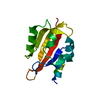

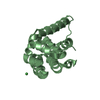





 PDBj
PDBj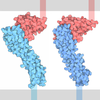




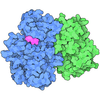






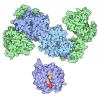
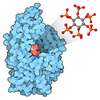
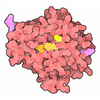






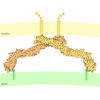



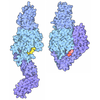





 HSQC
HSQC